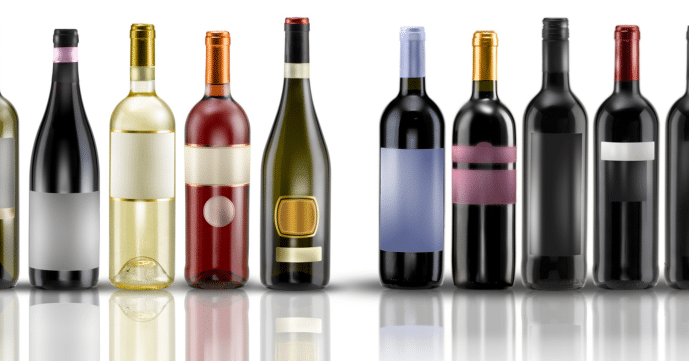You’re at a restaurant hosting a group. The waiter approaches and says “can I get you anything to drink? A bottle of wine perhaps?” Someone says “That sounds nice” and everyone nods in agreement, looking at you. Your placid smile denies the dampness starting to emerge on your forehead – they want you to pick the wine. You could give up the honored position and let someone else pick but this is your night. So you look at the wine list – more a book – and think how can I pick one wine out of the hundreds here?
Don’t panic. You don’t have to resort to the old theory of buying the second cheapest bottle of wine on the list (even though that’s actually not a terrible way to go, if (and a big if) the restaurant cares about wine). Here are a few suggestions for choosing a wine when you don’t know anything and haven’t done any homework.
7 Steps to Choosing The Wine
This process is not about picking the sole perfect wine – this is about narrowing down choices. It’s not fail-safe but this should increase your odds that you’ll choose a bottle you like, stay in your budget, and not be embarrassed by having to admit you don’t know jack.
So here we go…

Tell your guests you’d be delighted to choose the wine. Ask your guests if anyone has any preferences for a varietal; most of the time you hear people say what they don’t like. Smile and nod. You’ve got this.

Scan the list. How is it organized? Most of the time, they show their wines by the glass, then by country/region, then by grape variety, and, for longer lists, then by style or theme. So get oriented. Also, peruse the list like you know what you’re looking at. You look smart that way.

Consider your price range. This is super important for two reasons. One, you don’t want to blow you budget. And two, price is correlated with quality. It’s not at all a perfect correlation but it’s a pretty good indicator when you don’t know much. So be thoughtful about how much you want to spend and what your limit is. Typically, you can expect to pay three to four times what you might pay at the store. So if you like $15 bottles of wine at your local liquor store, you’ll probably pay anywhere from $45-60 for a similar bottle at a restaurant.

Settle the basics in your mind. Consider the kind of restaurant you’re at and the people you’re with. A hearty BBQ place might not call for a light wine. People have traditionally said red with meats, white with fish and chicken but nowadays that rule can be broken. So what do you like better? Go with that.

Choose where you want to be – do you want to go domestic or international? Do you have a personal affinity? Will it be California or Washington? Italy, France, Australia or Argentina? A fun way to narrow in is to consider if you have a story or connection to the region or type of wine. Did you spend your junior year in college in Florence, Italy? Have you always wanted to visit Peru? Or did you have your first torrid romance with a sexy Australian? Is there a region you’ve visited where you’ve done wine tastings?
Choosing a wine is a lot like storytelling, just as drinking someone’s choice of wine is like listening to their story. And a personal story can go a long way to increasing your guests’ and your enjoyment of a wine. If you don’t have any connection or don’t want to go that way, then stay domestic. You’ll likely get the best bottle for the money you spend. Typically, in the US, domestic means California but don’t be afraid to venture off to Oregon or Washington.

Look at the age/year. Like price, in general, the older, the better. Best advice I’ve ever received is to select the oldest bottle you can afford. (By the way, the same goes for when you’re selecting wine by the glass.)

At this point, you’re circling around a much-reduced list of candidates. So jump in and pick one. You can’t go too wrong – you’re in the right price range, you’ve got a varietal you like and you probably have a story you can tell your guests about why you picked it.
But if you have access to a sommelier or a waiter, approach the waiter/sommelier with 2-4 bottles you’re considering. Share your shortlist; this will tell them roughly what price range you’re in and what you like. Ask questions… “I’m looking at these – what do you think?” “Here are 3 that caught my eye. Are there others you would recommend?” “What’s your favorite bottle under $75?” “What are you excited about on this list?”

Tell your guests you’d be delighted to choose the wine. Ask your guests if anyone has any preferences for a varietal; most of the time you hear people say what they don’t like. Smile and nod. You’ve got this.

Scan the list. How is it organized? Most of the time, they show their wines by the glass, then by country/region, then by grape variety, and, for longer lists, then by style or theme. So get oriented. Also, peruse the list like you know what you’re looking at. You look smart that way.

Consider your price range. This is super important for two reasons. One, you don’t want to blow you budget. And two, price is correlated with quality. It’s not at all a perfect correlation but it’s a pretty good indicator when you don’t know much. So be thoughtful about how much you want to spend and what your limit is. Typically, you can expect to pay three to four times what you might pay at the store. So if you like $15 bottles of wine at your local liquor store, you’ll probably pay anywhere from $45-60 for a similar bottle at a restaurant.

Settle the basics in your mind. Consider the kind of restaurant you’re at and the people you’re with. A hearty BBQ place might not call for a light wine. People have traditionally said red with meats, white with fish and chicken but nowadays that rule can be broken. So what do you like better? Go with that.

Choose where you want to be – do you want to go domestic or international? Do you have a personal affinity? Will it be California or Washington? Italy, France, Australia or Argentina? A fun way to narrow in is to consider if you have a story or connection to the region or type of wine. Did you spend your junior year in college in Florence, Italy? Have you always wanted to visit Peru? Or did you have your first torrid romance with a sexy Australian? Is there a region you’ve visited where you’ve done wine tastings?
Choosing a wine is a lot like storytelling, just as drinking someone’s choice of wine is like listening to their story. And a personal story can go a long way to increasing your guests’ and your enjoyment of a wine. If you don’t have any connection or don’t want to go that way, then stay domestic. You’ll likely get the best bottle for the money you spend. Typically, in the US, domestic means California but don’t be afraid to venture off to Oregon or Washington.

Look at the age/year. Like price, in general, the older, the better. Best advice I’ve ever received is to select the oldest bottle you can afford. (By the way, the same goes for when you’re selecting wine by the glass.)

At this point, you’re circling around a much-reduced list of candidates. So jump in and pick one. You can’t go too wrong – you’re in the right price range, you’ve got a varietal you like and you probably have a story you can tell your guests about why you picked it.
But if you have access to a sommelier or a waiter, approach the waiter/sommelier with 2-4 bottles you’re considering. Share your shortlist; this will tell them roughly what price range you’re in and what you like. Ask questions… “I’m looking at these – what do you think?” “Here are 3 that caught my eye. Are there others you would recommend?” “What’s your favorite bottle under $75?” “What are you excited about on this list?”
More Ways to Learn About Wines
Now if you’re open to it, there are a few other things you can do. Some of the wine selection apps (like Vivino) make it easy to submit a photo of a wine list and instantaneously get back wine ratings. It’s cool, maybe a little awkward. You could also have done a little pre-research before arriving. Many restaurants keep their wine lists online.
And of course, there are great books – including the Complete Wine Selector: How to Choose the Right Wine Every Time. And if you’re into memoirs and want to get into wine culture vicariously, a really enjoyable book is Cork Dork.
Warning - Make Sure You Get What You Order
And finally, a warning. I learned this from an old boss of mine who is a huge wine lover. He knew a lot about wine, even down to the vintage, varietal, and vintner. We went to dinner one night and he told me that if you specify a specific wine, always check the bottle to make sure it’s what you ordered.
Often, they’ll bring you a younger wine from the same winery and serve you that. And sometimes, they’ll even try to sell it to you at the same price as the older wine. Sure enough, at this very dinner when he gave me the advice, he ordered a very specific bottle. When it came, the waiter brought the same bottle just two years younger. He sent it back.
So there you have it. Seven somewhat easy steps to pick a wine when you don’t know very much about wines and don’t want to look stupid.
Share this post:
Our site contains links to products and services, which may provide us with a commission. Prices provided are up-to-date when posted. As an Amazon Associates, we earn from qualifying purchases.
Author
-

Elissa is a semi-retired mom of 2 kids and 4 pets, wife, sister, and friend; she also sits on several corporate and non-for-profit boards. A former CMO, she loves mentoring, learning, and appreciating great marketing and ideas. She runs pretty busy with all of that but loves binging on both good and bad tv/film. And whenever she can, she travels.
View all posts






My knee jerk reaction was Vodka. Is that wrong? Hugs
Vodka is never wrong!
Great advice especially about having a story to tell. I also like the Vivino app.
Yes, I’m a fan of the Vivino app too. Very useful. It’s a bit obvious when you’re using it at the table but if you’re with people who don’t care, it is very much worth it!